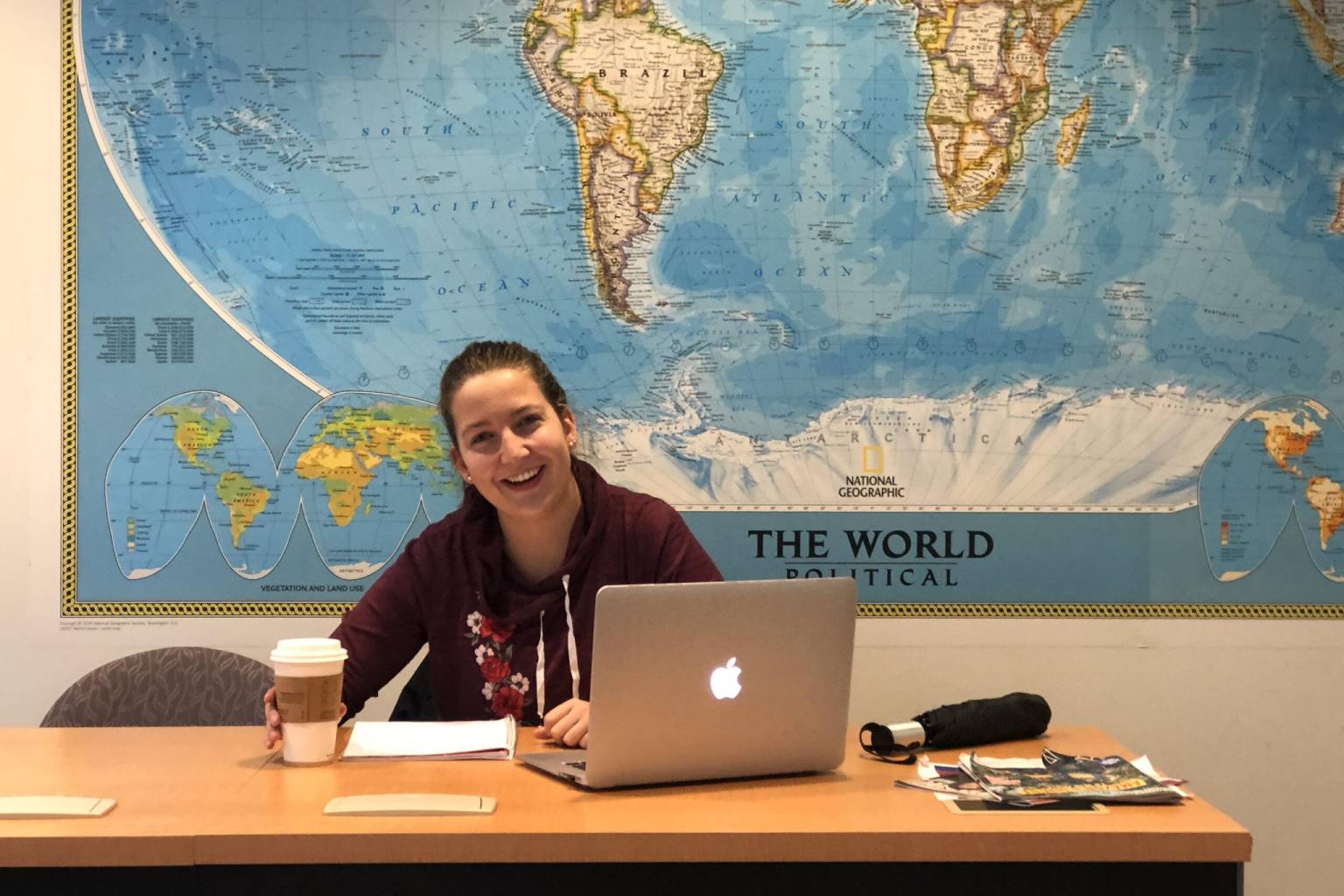Tearing Down Language Barriers, Building Cultural Bridges
I sit down at an outside table at Easton Cafe, with a hot coffee at my side and a beat-up notebook in front me. Maren, an exchange student from Germany, arrives a few minutes later for our German lesson. “Hallo,” she says to me, “Wie geht’s dir?”

“Mir geht’s gut,” I respond. “Und dir?” For the next five minutes, we go back and forth like this, with me having to look down at my notes from the previous week to ask rehearsed questions such as “What did you do today?” and “Where are you from?”
Maren has been teaching me German all semester as part of my Understanding Language Learning course. The class, which is focuses on the linguistic and social factors that affect learning a second language, takes a hands-on approach and requires everyone to spend the semester learning a new language of their choice. Maren, whom I met over the summer at International Student Orientation, immediately offered to teach me her native language — and so here we are, week after week, having conversations in broken German.
When I ask Maren what the hardest part about teaching German is, she tells me, “I mean, everything! I’m not a big grammar nerd; I’ve never been. I’m just a normal German person, teaching my language to an American. In the German language, we have a lot of things you don’t have in the English language, stuff I barely understand myself. The hard part is explaining the grammar rules, because it’s my native language and it’s so difficult trying to translate them into English. I didn’t think it would be that hard, but it is. Teaching someone your own language is not easy, not at all.”
This is something I can definitely relate to. Last semester I studied abroad in Chile, and while I was there I helped teach English to Chilean students at my university. I had so much fun that, when I came back to Arcadia this semester, I started volunteering with the English Language Institute as a conversation partner. I was partnered with Yujie Sha (or Mark, as he goes by in English), a junior from China who is studying Actuarial Science at Arcadia through the Jiangsu University program. We meet every week for an hour to eat lunch, play ping-pong (Mark has beaten me every time), or just talk about what’s going on in our lives. The point of conversation partners isn’t to teach a student English, but rather help them feel more comfortable speaking it. Of course, we run into many obstacles as words get lost in translation— but we always laugh it off as we try to explain to each other what we are trying to say, which often results in ridiculous expressions or charades.
Being a language teacher and a language learner at the same time has caused me to spend a lot of time reflecting on what it truly means to learn a second language.
– Heidi Specht
Being a language teacher and a language learner at the same time has caused me to spend a lot of time reflecting on what it truly means to learn a second language. Not only does it break down barriers, but it causes you to learn things about someone else’s culture that you might have never known. While many people may agree that the United States is a dominant world power, we are also the world’s most linguistically limited one. Only about 17 percent of U.S. citizens speak more than one language, which is nothing compared with 54 percent of Europeans.
My advice? We need to step up our game. If we can’t communicate with others, we miss out on the opportunity to connect with them.



